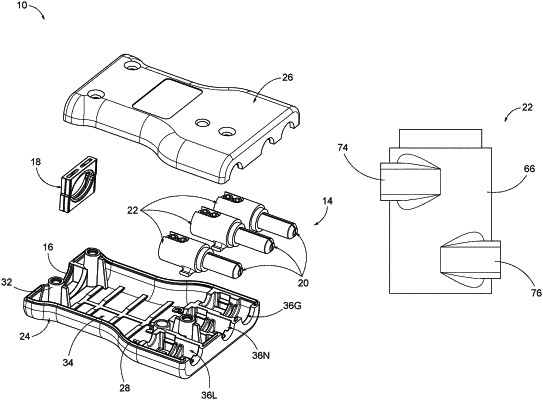|
1. An electrical connector comprising: a first housing member having a first conductor opening and a plurality of first contact portions, wherein each the first contact portions are defined by a top wall, a bottom wall, and at least one side wall; a second housing member having a second conductor opening and a plurality of second contact portions, wherein the second housing member is releasably connected to the first housing member and the plurality of second contact portions align with the first contact portions when the first housing member is connected to the second housing member; a cylindrical sleeve including a body having an outer surface and an inner surface, the sleeve releasably received in at least one of the first contact portions by an interference fit; and a contact member releasably received in the sleeve; wherein a first set of projections extends from the sleeve body, and a second set of projections extends from the sleeve body, wherein the first set of projections are spaced radially and axially offset from the second set of projections.
|
